Assignment 3.1: Research Blog for Module 1 & 2
Module 1 Post 1: www.ohneganos.com
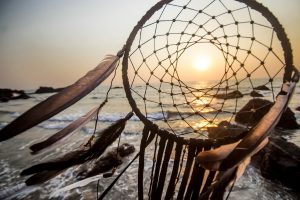
This website provides information about their research project into Indigenous communities drinking water quality. Furthermore, it provides learning materials that decolonizes mapping through utilizing digital tools to demonstrate the history of Indigenous lands and Indigenous names of the different lands and waters, a Virtual Reality experience through the Indigenous lands, and the use of digital storytelling to teach about the waters and land. The examples of digital tools and Indigenous education gives us an idea and look into how we as educators can utilize technology within an Indigenous education.
Module 1 Post 2: Cole, K. (2021, October 1). How Indigenous creators are nurturing a space on TikTok to educate and entertain [PBS News Hour]. Retrieved from https://www.pbs.org/newshour/arts/how-indigenous-creators-are-nurturing-a-space-on-tiktok-to-educate-and-entertain
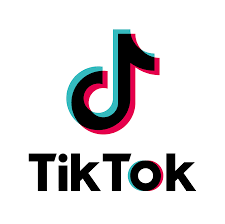
This article provides the TikTok accounts of some Indigenous youths who use their accounts to share their culture, connect with their community and advocate for justice. Some TikTok parodies that poke fun at stereotypes of Indigenous people or exoticize Indigenous people are used, but the article notes that these youths use comedy and social media to push their voices and stories to the front rather than remaining silent. This particular perspective of using social media to connect with community, share knowledge and educate about Indigenous culture resonates with me as I explore how digital media can reflect Indigenous culture and practices in culturally appropriate ways.
Module 1 Post 3: https://actua.ca/

Actua (2021) is an outreach organization that offers training to educators, but primarily offers documents to inform parents, teachers and students about the Indigenous perspective in Science, Technology, Economics and Mathematics. However, their documents also note the importance of two-eyed seeing. That is, we cannot separate Canada from our dominant or Western perspective, or the historical and silenced Indigenous perspective. It is important to use a lens that sees from both perspectives, only then, can truly decolonize education. A main focus is the importance of place-based education, the importance of students getting to know their community and its histories. This resource resonated with me as I do sometimes find it difficult to remove the western knowledge from my prior knowledge as I learn about Indigenous culture and education. However, using both lens is applicable to my current knowledge and my histories.
Module 1 Post 4:
City News. (2022, September 27). Content creator spreads Indigenous education on social media [YouTube]. Retrieved from https://youtu.be/gwyE0H99kMc
Instagram: https://www.instagram.com/zhaawnong/
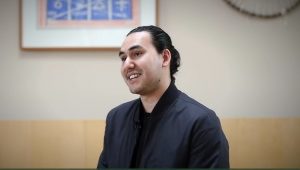
This YouTube video was posted by CityNews that follows content creator, Zhaawnong Webb, who uses comedy and social media to teach followers about Indigenous culture. He acknowledges that it has been that non-Indigenous people that tend to share stories about Indigenous people, who warp stories that remove contexts or its true meaning. He utilizes his content, background as a member of the Indigenous community, an educator and a truth teller to fill the gaps and reclaim his voice and stories through the use of social media. Being a user of social media, I found watching Zhaawnong Webb’s reels on instagram cultural responsive to me, as it reflected the style, comedy and culture of videos I tend to watch. This connection intrigued my curiousity to learn and watch more from the user. This is of significance as it made me think of other youths’ and their preferences in retaining information.
Module 1 Post 5:
Rice, E.S., Haynes, E., Royce, P., & Thompson, S.C. (2016). Social media and digital technology use among Indigenous young people in Australia: a literature review. International Journal for Equity in Health, 15, 1-16.
This is a literature review which found that social media allowed Indigenous community members to use their language, share, confirm and enact their identities. Social media allows Indigenous community members to reclaim their power, control and freedom over their identities, communities and speech/expression. Social media also lends its way more toward Indigenous perspectives due to its visual and oral directions, allowing members to connect with family and communities. However, cyber bullying, racism and lack of access due to remoteness, socioeconomic status, education and employment continue to plague Indigenous communities through the use of social media or digital media. This article opened my perspective in terms of how the technology, social media, have similarities to Indigenous culture and practices.
Module 2 Post 1:
Huijser, H. (2014). Exploring the opportunities of social media to build knowledge in learner-centered Indigenous learning spaces. John Benjamins Publishing Company, Retrieved from file:///Users/rikavuong/Downloads/05huicorrectedpublishedversion.pdf
This article reinforces the idea that social media as a medium, is user-centred and controlled, flexible, democratic, and both very transparent and also very not so. The way in which social media invites conversation and discussion and focuses on interacting collectively, draws on similarities to Indigenous perspectives. This use of social media in educational practices shifts from teachers as a beholder of knowledge to the open collective creation and discussion of knowledge. This article provides more perspective on how social media as a medium can draw on aspects of Indigenous cultures and practices which makes the medium successful maintaining Indigenous culture.
Module 2 Post 2:
Toronto History Museums. (2020, December 14). We were always here – Acknowledgment (A film by Jonathan Elliott, 2020) [YouTube]. Retrieved from https://youtu.be/3X4MYbJvLUI
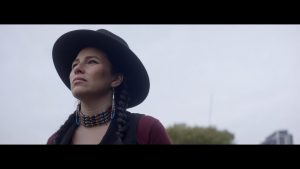
This powerful short film demonstrates the tokenism of Land Acknowledgement in schools. It points out to the audience how little histories and stories of Indigeneous people are shared about the names of our land and about the important Indigenous people who were covered or silenced due to colonialism. It reminds us to look into the people, communities and histories that shape or made the land that we are on today. It tells us to question and acknowledge our collective history, in order to move toward true Truth and Reconciliation. This short film reminds me to not only look at current trends but look at the histories that have made Indigenous culture the way it is today.
Module 2 Post 3:
Molyneaux, H. (2014). Social media in remote First Nation communities. Canadian Journal of Communication, 39(2), 275-288.
This article acknowledges the importance of social capital for Indigenous communities. Examples of social capital are women, men, grandparents, youth, and children that need to circulate and exist within a community to protect Indigenous culture and identity. The use of the internet has allowed sharing of stories about the self, practices, language and community which is critical in maintaining the Indigenous culture. Potential challenges of the internet are social isolation and dominant language overshadowing Indigenous languages, the Internet can also be a great source to combat those challenges as it provides Indigenous communities with a tool to connect with other community members especially when they are from a Remote area with low populations of Indigenous people. Social media also becomes a tool to share and sustain their Indigenous language.
Module 2 Post 4:
Carlson, B. (2017, April 27). Why are Indigenous people such avid users of social media? The Guardian. https://www.theguardian.com/commentisfree/2017/apr/27/why-are-indigenous-people-such-avid-users-of-social-media
This article compares social media use between Indigenous people with non-Indigenous people. Particularly, it looks at how parents, siblings and extended families are using social media. This is a reason why non-Indigenous people are decreasing their use of social media, due to privacy concerns regarding their family members being able to see into their private lives. However, this same reason is why Indigenous users of social media are on the rise. Indigenous users want their families and extended families to be able to see their post, stay connected and continue their sense of community. This interesting juxtaposition of Indigenous and non-Indigenous people and their reason for using (or not) social media brings to light the differences in western and Indigenous culture and practices.
Module 2 Post 5:
Kennedy, J.R. (2014, March 30). Ellen Degeneres targeted by #sealfie campaign. Global News. https://globalnews.ca/news/1239661/ellen-degeneres-targeted-by-sealfie-campaign/
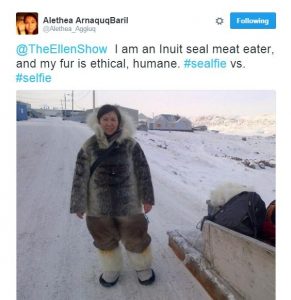
In 2011, Ellen Degeneres posted a statement that condemned Seal hunting. However, this impacted Indigenous communities as it continued to “Other” Indigenous communities, judge and stereotype their culture and livelihood. This post impacted Indigenous communities as it pushed them to utilize social media to start a “Sealfie” movement that played on the word “Selfie,” where Indigenous people wore their seal fur jackets to advocate for their culture maintenance, stand up against the shunning of their culture and educate people on the practice of Seal Hunting. A teenager made a plea via YouTube where she posted it onto facebook to ask Ellen Degeneres to be more cautious and informed of her advocacy, focusing on educating and the importance of authentic information. This article continues to demonstrate how dominant society continues to utilize their gaze upon Indigenous culture and practices. It also demonstrates the power of social media and followers on impacting change.







 Another resource I wanted to call out for educators looking to decolonize their curriculum is the ‘
Another resource I wanted to call out for educators looking to decolonize their curriculum is the ‘